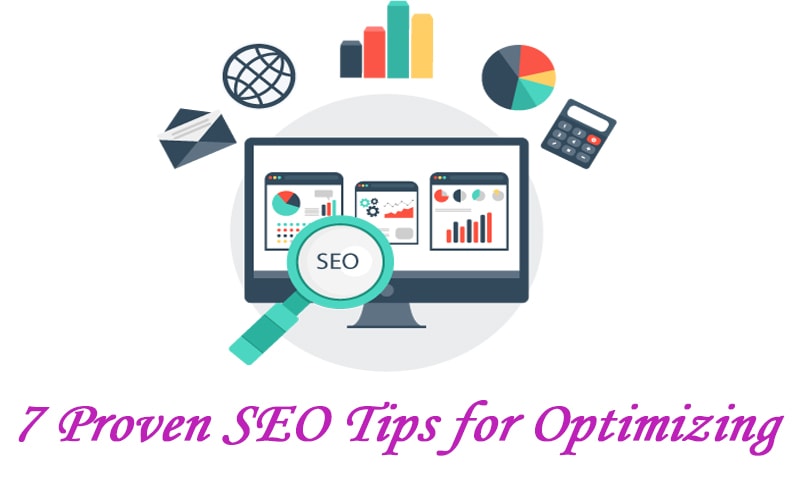Blogging is among the most popular ways to earn more money online. Equipped with solid monetization strategies, experienced bloggers can get from $3,500 to $15,000 per month from their blogs. Pro bloggers may even make seven-digit income.
With such a prospect, it’s no wonder that more and more people want to try their luck in blogging. However, choosing the perfect blogging platform can be challenging, especially for users looking to build their first blog.
A blogging platform refers to software that helps users to build, manage, and publish their blogs. These platforms often come with specified features for different blog niches. Thus, it’s essential to dig deeper into each of them to help find the best match for a specific purpose and skill set.
In this article, we’ll walk you through the six best blogging platforms for 2021 to help you decide on the ideal platform that best suits your blog needs. Let’s get started.
Table of Contents
Best Overall: WordPress.org
Pros:
- Full blog control with WordPress hosting.
- Flexibility and scalability.
- Tons of plugins and themes.
- SEO opportunities.
Cons:
- Steep learning curve.
Pricing:
- Completely free.
- $3.50/month – $50.00/month for WordPress hosting.
Powering more than 40% of all websites worldwide, WordPress is the most popular blogging platform on the market. Its directory contains thousands of plugins and themes, suitable for any type of blog.
Using this platform, users can incorporate extra features, like a paid membership or an online shop, to help their blogs scale. Therefore, WordPress is great for users who want to make more money blogging.
On top of that, WordPress is an open-source platform. Users can access and modify its source code to add or remove functionalities to cater to their blog’s requirements. With this feature, WordPress offers more flexibility for customization and configuration.
However, this flexibility may require some technical knowledge to be fully optimized. Thus, WordPress may have a steeper learning curve compared to other blogging platforms.
If users want to get a unique blog domain name, they can use a WordPress hosting service to self-host their WordPress blogs. WordPress hosting costs between $3.50/month and $50.00/month, depending on the benefits.
For the latter, users need to utilize a domain checker to ensure their chosen domain name is still available. On top of all, having a custom domain lets blog owners optimize content marketing with SEO to boost the blog’s ranking on the search engine’s page.
Best for Beginners: Wix

Pros:
- Ease of use with a drag-drop feature.
- Hundreds of beautiful templates.
- Comprehensive knowledge base.
- Post on the go with Wix mobile app.
Cons:
- Limited features for the basic plan.
Pricing:
- Premium accounts start from $4.50/month.
Featuring an easy drag-and-drop functionality, Wix is a great website builder for blogging beginners. This platform provides a library consisting of thousands of articles to ease users’ blog development processes.
In terms of design, Wix has dozens of attractive themes in its directory for any blog niche. Users can also customize their blogs using third-party apps, easily found on the Wix App Market.
The Wix mobile app is also excellent software to create a draft, edit, and publish articles through it whenever ideas pop out.
Wix’s subscription plans start from $4.50/month with a 14-day money-back guarantee.
However, the cheapest plan is rather limited compared to the others. It doesn’t include a free domain name and will show Wix ads on users’ blogs. Also, it has a bandwidth limitation which is 1 GB/month.
The most popular plan costs $12.50/month. It includes:
- A free domain for a year.
- A free SSL certificate.
- Unlimited bandwidth.
- 10 GB storage space.
- A one-year free analytics and site booster app.
Best for Writers: Medium

Pros:
- Shallow learning curve.
- Online communities.
- Writing and publishing oriented.
- Medium Partner Program for monetization.
Cons:
- Users can’t display ads.
- Doesn’t support unique domain names.
- Limited design functionalities.
Pricing:
- Available for free.
Medium is a free, easy-to-use blogging platform for passionate writers. It works like social media, in which users need to create an account to share their articles. With that said, users’ blog domain names may look like this: https://medium.com/blogaddress once signed up.
This platform offers social networking features for users to connect with other bloggers. Readers can also subscribe to a blog, making Medium the perfect place to gain an audience conveniently.
For monetization, Medium offers the Medium Partner Program for writers to get paid for their stories monthly. Apart from that, this program will also distribute writers’ articles across all Medium channels.
All Medium writers who sign up for this program – that’s 70% of all Medium bloggers – get paid. On average, they earn $0.055/word, and 66.7% of them obtain more than $100/month.
However, writers cannot display ads on their blogs. On top of that, Medium isn’t the best platform to get creative with design as it mainly focuses on publishing.
Best for eCommerce: Weebly

Pros:
- Fully-hosted.
- Square payment integration.
- Extensive eCommerce features.
Cons:
- Limited features and bandwidth with the free and basic plans.
- Expensive paid subscription.
Pricing:
- A free plan is available.
- Premium plans start from $5.00/month.
Weebly is a fully-hosted blogging platform powered by the Square payment. With that said, business owners who want to build a blog to complement their eCommerce can take a huge advantage of this platform.
Weebly is also easy to use, making it the best choice for newcomers. It features a friendly interface and a typical drag-drop editor. On the dashboard, users may see the blog’s live preview and the tool gallery containing Basic, Structure, and Media sections.
Weebly offers free and premium plans.
The former is a bit limited in terms of the built-in features. It also contains Weebly branding, including in the blog’s domain name. The latter starts from $5.00/month. While the features are very similar to the free plan, it supports custom domain names from a third-party provider.
For users who want to integrate eCommerce, the Pro Plan for $12/month may be the perfect choice as it:
- Incorporates Google Ads.
- Removes Weebly branding elements of the blog.
- Provides easy Square payment integration.
- Enables shopping cart button placement.
- Offers customer service via phone calls, chats, and email tickets.
In addition, the Business Plan for $25.00/month offers more extensive eCommerce features, including item badges, inventory management, an automatic tax calculator, and advanced eCommerce analytics.
Best for Hobbyists: Blogger

Pros:
- No coding is needed.
- Easy Google product integrations.
- Publish on the go with Blogger mobile app.
Cons:
- Limited control over the blog.
- A limited number of excellent third-party apps.
Pricing:
- Completely free.
If you are a hobbyist looking into building a blog for a side hustle, Blogger can be the best choice. It requires no money to start a Blogger blog, so you can invest the money in your hobby.
Blogger is another beginner-friendly blogging platform that requires no coding. As it is provided by Google, users only need to use their Google accounts to log in to Blogger.
Once logged in, users can choose the best template that caters to their blog niche and start building their blog right away. Fine-tuning a Blogger blog’s looks and feels is also hassle-free with its intuitive dashboard.
On top of that, Blogger mobile app lets users create, edit, delete and post articles at any time and place.
Blogger comprises easy integration of Google’s products. For example, users can incorporate Google Analytics to help them gain more precise insights into the blog’s traffic and visitors. Also, Google Adsense and Google Keyword Planner are among the useful Google tools to integrate.
Also, Blogger is completely free. Using this platform, users are given the freedom to create a subdomain for the blogspot.com root domain. Furthermore, Blogger also allows users to get a unique domain name from a third-party provider.
However, third-party apps aren’t Blogger’s best friends as there are only a limited number of them. Also, users may have little control over their blogs, as all of the blog’s data is stored on Google. Therefore, migration can be rather tedious.
Best for Tech-Savvy Writers: Ghost

Pros:
- Blogging and writing focused.
- Intuitive user interface.
- Markdown text editor.
- Customer service over email tickets.
Cons:
- Limited theme options.
- It can be hard to customize.
Pricing:
- Starts from $9.00/month.
Ghost is another blogging platform that focuses on writing and publishing. Like WordPress, this platform is an open-source content management system. Therefore, it may require one or two technical skills.
Ghost’s interface is really simple, and it contains demo content to give visuals on how the blog may look. On it, three menus are available: Content, New Post, and Setting. It’s very straightforward, encouraging users to write right away.
Ghost uses the Markdown visual for editing. This text editor is similar to Mac’s TextEdit and Windows’s Notepad. While users may need some adjustments when using Markdown, the tool ensures content pieces are translated to structurally valid HTML.
Ghost comes with a selection of minimalist templates to help users create clutter-free blogs. It also supports custom themes and third-party app integrations. However, the process may require users to play around with CSS.
Ghost’s most basic plan, Starter, costs $9.00/month. With this plan, users get:
- A free SSL certificate.
- CDN integration.
- Automated updates and backups.
- Threat & uptime management.
While there’s no free plan available, Ghost gives a 14-day free trial to let users experience its service to help them decide.
Conclusion
Throughout this article, you’ve learned the six best blogging platforms for different purposes. Let’s have one more look at each of them:
- Best overall: WordPress.org. Being an open-source CMS makes WordPress highly customizable. It also supports paid memberships and online store integrations to help bloggers reach a wider audience.
- Best for Beginners: Wix. One of the most intuitive blogging platforms for freshers. It packs a drag-and-drop feature and offers dozens of beautiful templates for any type of blog. Also, the Wix mobile app lets users publish their articles on the go.
- Best for Writers: Medium. This blogging platform focuses on writing and publishing. Creating a community is feasible with Medium, as it uses a social networking system like social media platforms. The Medium Partner Program allows writers to monetize and distribute their articles across the different Medium channels.
- Best for eCommerce: Weebly. Having Square payment as its parent company, Weebly is one of the best blogging platforms for business owners. With the premium plans, users get plentiful eCommerce-related benefits, such as advanced analytics and inventory management.
- Best for Hobbyists: Blogger. This platform is entirely free, making it the best bet for users who want to blog for a side job. Powered by Google, all Google product integrations are made easier.
- Best for Tech-Savvy Writers: Ghost. If you know your way around website development and Markdown, this blogging platform may be the one for you. The Ghost CMS also packs numerous website optimization features, including a free SSL certificate and CDN integration.
We hope this article has given you deeper insights into some of the best blogging platforms to try in 2021. Happy blogging!




